Exhibitions
Features of the Exhibition
About Exhibitions of the Tokushima Prefectural Museum
What kind of place is Tokushima? The museum’s permanent exhibitions are centered on the theme of “life and time.” They comprehensively cover Tokushima’s nature, history, and culture using a rich set of materials and digital contents. In one stop, you can experience everything that’s great and unique about Tokushima.
Exhibition room VR map
Admission fee
Information on the permanent exhibition dedicated app "Yusan Navi"
"Yusan Navi" is a dedicated app for enjoying the experience of using audio guides, AR, and VR when viewing the permanent exhibition of the Tokushima Prefectural Museum. There are iOS / iPad OS version and Android version. Please install and use it according to your terminal. We recommend that you install it at home in advance before visiting.
■Those who have an iOS / iPad OS device such as iPhone or iPad
Please download and install from the App Store.
■Those who have an Android device
Please download and install from Google Play. Problems may occur depending on the model. In that case, please use the rental terminal.
Communication Zone
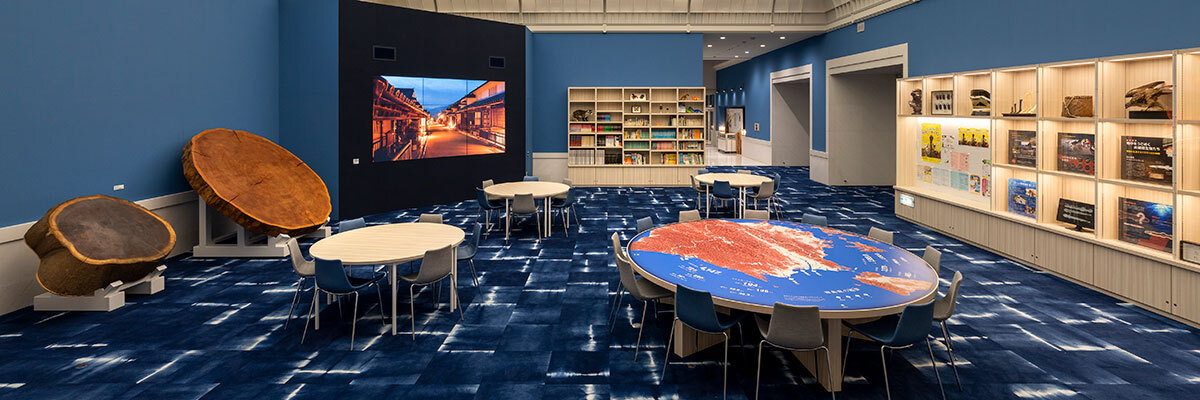
The Communication Zone is a space comprised of various elements. These include the high-definition “Yusan” Theater, the Digital Collection Wall, a communication board for staff-visitor interactions, and more to fully understand Tokushima.
Exhibitions
1.Tokushima Dinosaur Collection

The Early Cretaceous strata (approx. 130 million to 100 million years ago) are distributed in the Katsuuragawa Basin area, Tokushima Prefecture. These strata have yielded various plant and animal fossils. The first dinosaur fossil discovered in Shikoku was from here. Subsequent excavations also produced valuable fossils.
2.Geological Age in Tokushima
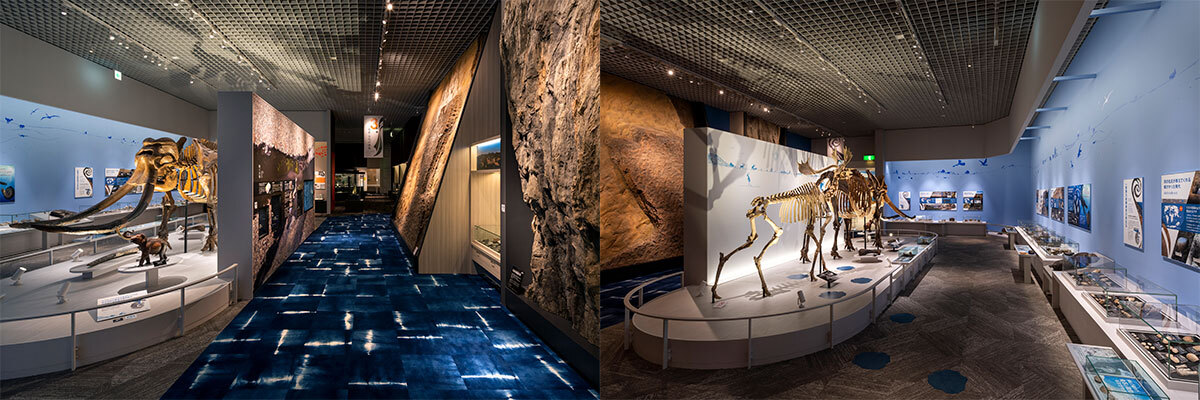
In the Shikoku area (Tokushima and other prefectures), the geological structure extends in an east and west direction. The rocks and strata are from different ages and formed in different ways. The foundation of Shikoku is composed of an accretionary wedge, which is a complicated geological body with strata and rock fragments of different kinds. This accretionary wedge is covered by strata from various ages.
3.Prehistory and Ancient Times in Tokushima

The museum’s prehistoric and ancient exhibitions cover from approximately 20 thousand years ago until the 11th century. They present humans and their lives from when they first came to Tokushima until the emergence of Awa Province (the predecessor of today’s Tokushima Prefecture). Over this long period, the natural environment changed, and exchange took place with East Asia, transforming production technologies and social structures.
■ Door for VR “Kofun” (Burial Mound)
Through the Door for VR, go inside the corridor-style stone chambers of “Kofun”(burial mound). You can have a close-up experience of the stone chambers of Inbeyama No. 2 Burial Mound in the city of Yoshinogawa and Dan No TsukaAna in the city of Mima. See if you can tell how they are different.
4.Middle Ages in Tokushima
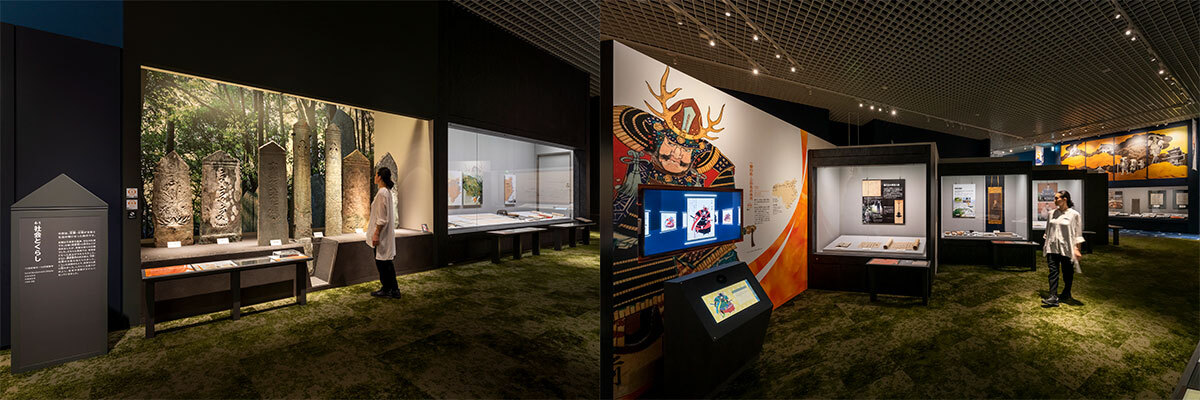
During the middle ages, which lasted from the second half of the 11th century to the second half of the 16th century, manors and government-controlled lands were sites of rule and people's daily lives. The imperial court and shogunate ruled over the country, and the warrior class, which had become more powerful, flourished, as did the masses. Buddhism and magical religious beliefs and practices also spread.
■VR Experience Room
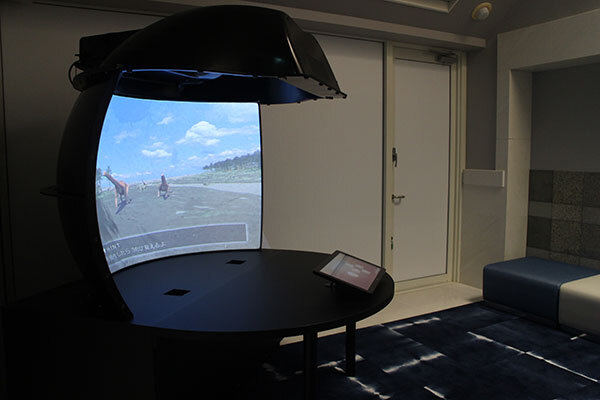
In the Tokushima Dinosaur Tour, slip back in time to Tokushima’s dinosaur age. Virtually experience a fossil excavation!
Why not try fishing upstream on the Yoshinogawa River for sweetfish?
5.Early Modern Times in Tokushima
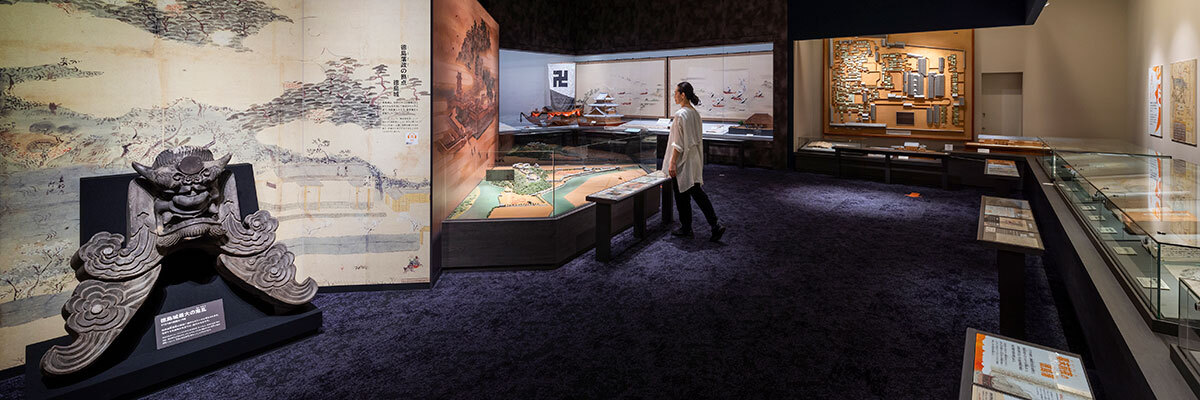
In Japan, early modern times lasted from around the second half of the 16th century to the second half of the 19th century (Azuchi-Momoyama period and Edo period). Throughout early modern times, the Hachisuka clan ruled Awa Province (Tokushima Prefecture). In the Tokushima Domain’s territory, many notable local products were produced, including Awa indigo. Also, people increasingly went on trips that were centered on the Shikoku Pilgrimage.
■ Door for VR “Awa Indigo”
“Sukumo” is indigo dye. Go through the Door for VR to see how it’s made! Experience the indigo leaf fermentation process “Nesekomi” that is done yearly from the fall to the winter. You can almost hear the indigo dyers breathing and smell the fermenting leaves.
6.Modern and Contemporary Times in Tokushima
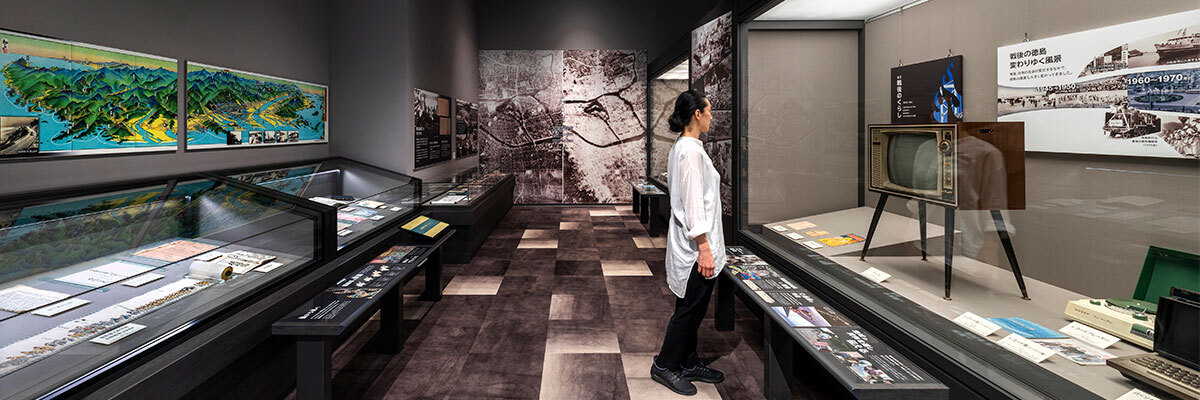
In modern and contemporary times, or the second half of the 19th century and later, society and the nation’s lives changed greatly. Japan fought multiple wars up through the mid-20th century, and their devastation reached Tokushima Prefecture. During recovery from the Pacific War (World War II) and the period of rapid economic growth that followed, as well as up through today, people have worked to lead rich daily lives.
7.Festivals and Performing Arts in Tokushima

Tokushima is blessed with a warm climate and a diverse natural environment. People in Tokushima have supplied many products, such as indigo dye to the all over Japan. Furthermore, the prefecture also had extensive connections with the former political, economic, and cultural centers of “Kinai” and “Edo”. People incorporated trends from other areas into their own festivals and performing arts, producing and passing on new forms of them, such as the dance called “Awa Odori”.
8.Nature and Lifestyles in Tokushima

Tokushima’s climate and terrain vary greatly. It has a warm temperate climate in its southern area and a cool temperate climate around the almost two-thousand meter-high Mt. Tsurugisan. Approximately four-fifths of the prefecture is mountainous land. There, one finds much steep terrain with deep valleys. There are also many rivers in the prefecture, such as Yoshinogawa River and Nakagawa River, providing an abundance of water resources. Tokushima’s diverse natural environment is host to many living things, and people’s daily lives involve the natural environment in a variety of ways.
Boats: Kandori-bune and Tosa-bune
Kandori-bune and tosa-bune are riverboats used for sweetfish fishing and other activities. The former is used midstream and downstream on the Yoshinogawa River, and the latter upstream and midstream. The boats are mainly propelled by pushing a bamboo pole against the river floor. Kandori-bune have flat bottoms and raised front and back ends. This is so they can handle the river’s diverse terrain. Tosa-bune, which are smaller, are made sturdier to withstand rapids. The kandori-bune on display is approximately 6 meters and 30 centimeters long. The tosa-bune is about 4 meters and 10 centimeters long.
9. Natural History Collections
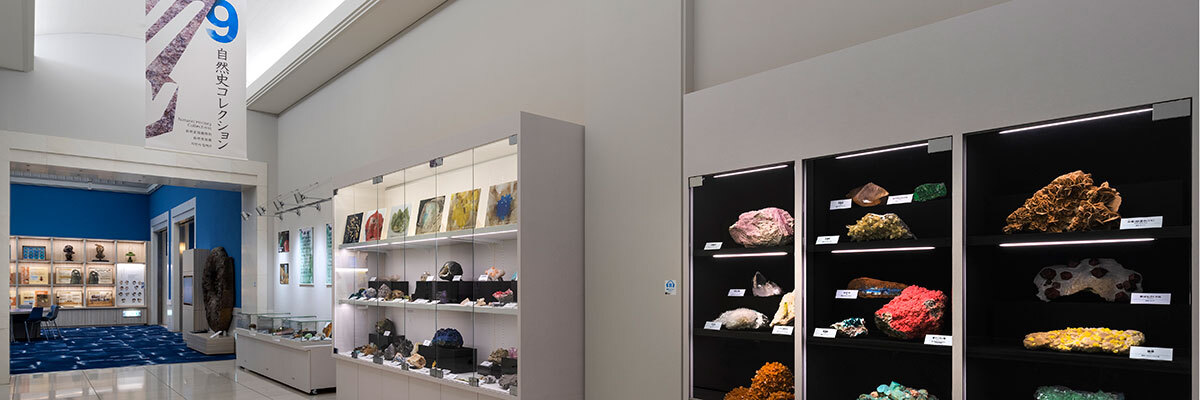
The Natural History Collections display both mineral specimens popular for their beautiful colors and shapes, as well as animals, plants, and geological materials not normally on exhibition. This collection’s exhibitions are theme-based. Each time there’s the opportunity, we’ll introduce minerals with interesting colors and shapes, as well as a variety of animals, plants, and fossil specimens. Look forward to discovering new, exciting things!
10. History and Culture Collections
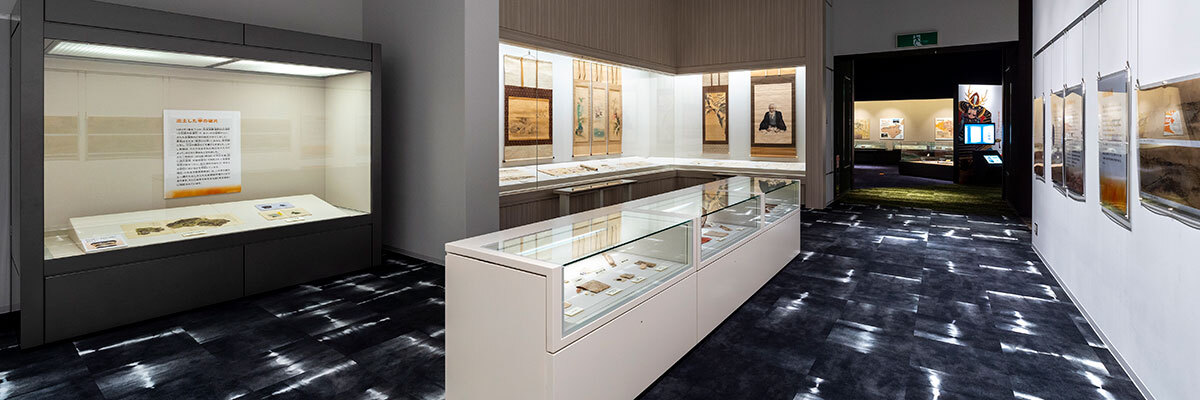
The museum has many items that are not on the permanent exhibitions. In History and Culture Collections, objects are frequently replaced in accordance with the change of the themes. They feature archaeology, history, folklore, and art and craft materials. We hope that visitors can encounter items they have never seen before and make exciting discoveries.
11. Collaboration Collections
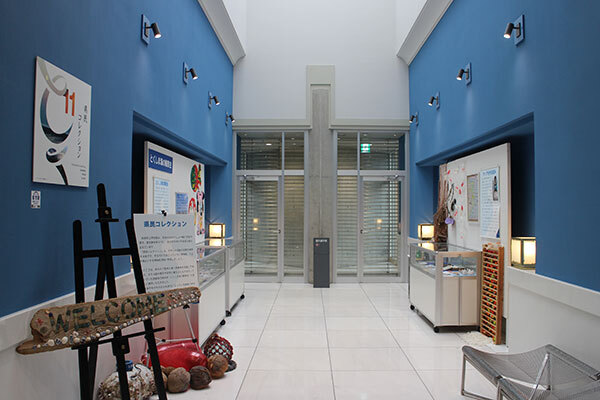
The Tokushima Prefectural Museum holds surveys, creates displays, and engages in educational work alongside prefecture residents. It supports their self-directed learning and community activities. The Collaboration Collections provides opportunities to present the fruits of these endeavors. There’s so much more to museums than just viewing display items. Try participating in our activities—they’ll enrich your life.
12. The History of the Earth and Life

Approximately 4.6 billion years ago, the Earth was born. It is thought that life appeared around 4 to 3.8 billion years ago. Life first emerged in the ocean. For a long time, there were only tiny organisms. However, around 600 million to 550 million years ago, large organisms appeared. Then, around 400 million years ago, they came onto land. Subsequently, they would adapt to various environments and evolve.
13.Biodiversity
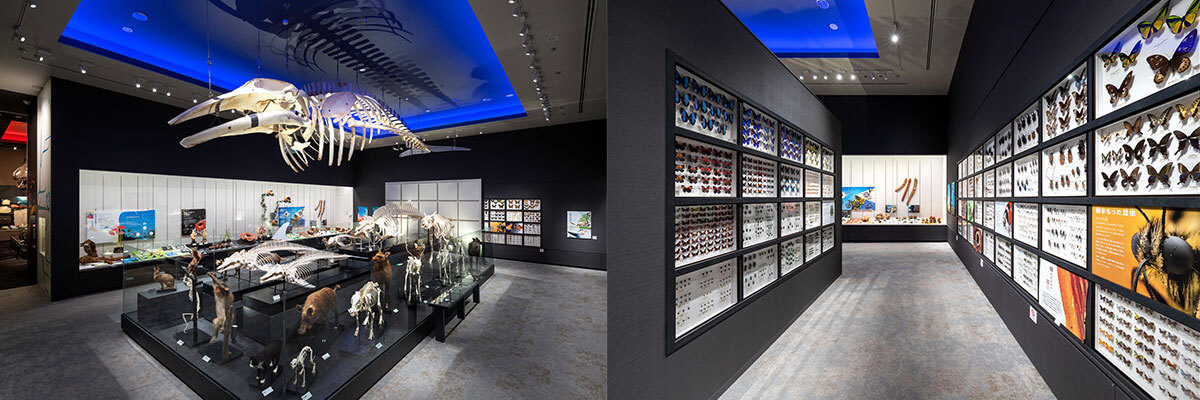
Living things have evolved over an incredibly long period. Today on the Earth, there are around 1.6 million species—quite an astounding number. They live while being involved with each other in complicated ways. In the same way, humans enjoy nature’s blessings while connecting with other living things. However, due to environmental degradation, the Earth’s biodiversity is being lost.




